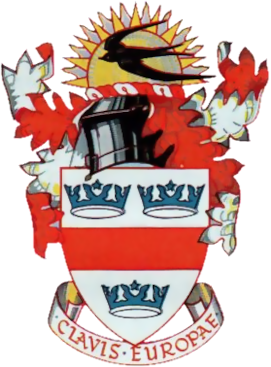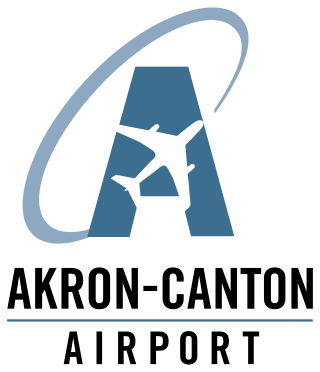
Piedmont Airlines, Inc. is an American regional airline headquartered at the Salisbury Regional Airport in Wicomico County, Maryland, near the city of Salisbury. The airline is a wholly-owned subsidiary of the American Airlines Group and it is paid by fellow group member American Airlines to staff, operate and maintain aircraft used on American Eagle flights that are scheduled, marketed and sold by American Airlines. Piedmont also provides ground handling and customer service for airports in the northeastern and western United States.

British European Airways (BEA), formally British European Airways Corporation, was a British airline which existed from 1946 until 1974.

Capitol Air was a United States supplemental air carrier and, after 1978, a scheduled passenger air carrier based which was operational from 1946 to its bankruptcy filing on November 23, 1984. It was founded as Capitol Airways in 1946, and then renamed Capitol International Airways in 1967. Supplemental air carriers were also known as irregular air carriers or nonscheduled carriers. In 1981, the airline changed its name to Capitol Air and was operating scheduled domestic and international passenger flights that year.

Phnom Penh International Airport, formerly Pochentong International Airport, is the busiest international airport in Cambodia and serves as the country's main international gateway. It is Cambodia's second largest airport by area after the new Siem Reap–Angkor International Airport. It is located in the Pou Senchey District, 10 kilometres (5.4 NM) west of Phnom Penh, the nation's capital.

Akron–Canton Airport is a commercial airport in the city of Green, in southern Summit County, Ohio. The airport is located about 14 miles (23 km) southeast of Akron and 10 miles (16 km) northwest of Canton. It is jointly operated by Summit County and Stark County. The airport is a "reliever" airport for Northeast Ohio and markets itself as "A better way to go", emphasizing the ease of travel in comparison to Cleveland Hopkins International Airport. Just under 90% of its traffic is general aviation. It is included in the Federal Aviation Administration (FAA) National Plan of Integrated Airport Systems for 2019–2023, in which it is categorized as a small-hub primary commercial service facility.

Buffalo Airways is a family-run airline based in Yellowknife, Northwest Territories, Canada, established in 1970. Buffalo Airways was launched by Bob Gauchie and later sold to one of his pilots, Joe McBryan. It operates charter passenger, charter cargo, firefighting, and fuel services, and formerly operated scheduled passenger service. Its main base is at Yellowknife Airport. It has two other bases at Hay River/Merlyn Carter Airport and Red Deer Regional Airport. The Red Deer base is the main storage and maintenance facility. The airline is also the subject of the History television reality series Ice Pilots NWT.

Air Ontario Flight 1363 was a scheduled Air Ontario passenger flight which crashed near Dryden, Ontario, Canada, on 10 March 1989 shortly after takeoff from Dryden Regional Airport. The aircraft was a Fokker F28-1000 Fellowship twin jet. It crashed after only 49 seconds because it was not able to attain sufficient altitude to clear the trees beyond the end of the runway, due to a buildup of ice and snow on the wings.

N'Djamena International Airport serves N'Djamena, the capital city of Chad. It is the country's only international airport. The airport is dual use, with civilian and military installations on opposite sides of the single runway.

Caledonian Airways Flight 153 was a multi-leg nonscheduled passenger service from Luxembourg via Khartoum, Lorenzo Marques, Douala and Lisbon, before heading back to Luxembourg. On 4 March 1962 a Douglas DC-7C flying the route, registration G-ARUD, crashed shortly after takeoff from Douala International Airport, Douala, Cameroon in a swamp on the edge of a jungle 2.4 kilometres off the airport. It is the deadliest crash of a DC-7. It is also the second-deadliest accident in Cameroon surpassed only by Kenya Airways Flight 507.

Airbus Industrie Flight 129 was an Airbus Industrie A330-321 test flight that ended in a crash on 30 June 1994 at Toulouse–Blagnac Airport, killing all seven people aboard. The last test flown was to certify the plane's takeoff capability with a single engine failure. It was the first fatal accident involving an Airbus A330 as well as the first hull loss of the type. It remained the only fatal accident involving an A330 until the crash of Air France Flight 447 on 1 June 2009.

Union Aéromaritime de Transport (UAT) was a French airline. It had its head office in the 8th arrondissement of Paris.
Air France has been in operation since 1933. Its aircraft have been involved in a number of major accidents and incidents. The deadliest accident of the airline occurred on June 1, 2009, when Air France Flight 447, an Airbus A330-203, flying from Rio de Janeiro to Paris crashed into the Atlantic Ocean with 228 fatalities. A selected list of the most noteworthy of these events is given below.
The 1947 Croydon Dakota accident occurred on 25 January 1947 when a Spencer Airways Douglas C-47A Skytrain (Dakota) failed to get airborne from Croydon Airport near London, and crashed into a parked and empty ČSA Douglas C-47 destroying both aircraft and killing 11 passengers and one crew member.

Two Air France Douglas DC-4 aircraft crashed two days apart in June 1950 within a few miles of each other and under similar circumstances. These two accidents, on 12 and 14 June, occurred while the aircraft were operating the same route from Saigon to Paris. Both aircraft had stopped at Karachi Airport and crashed into the sea on approach to Bahrain. A total of 86 passengers and crew were killed: 46 on June 12 and 40 on June 14. There were a total of 19 survivors: 6 on June 12 and 13 on June 14.

The 1947 BOAC Douglas C-47 Crash occurred on 11 January 1947 when Douglas C-47A G-AGJX of British Overseas Airways Corporation (BOAC) crashed into a hill at Stowting, Kent, in southeast England, killing five people outright, with a further three dying from injuries received. The aircraft had been operating a scheduled international flight to West Africa via France. Poor weather caused the aircraft to attempt to divert. After attempts to land at a number of French airports, the pilot decided to return to the United Kingdom as he was running short of fuel. The aircraft crashed while attempting to land at Lympne Airport.

British European Airways Flight 530, also known as the Mistberget Accident, was a controlled flight into terrain of a Douglas C-47 Skytrain into the Mistberget mountain in Eidsvoll, Norway, on 7 August 1946 at ca. 14:00. The British European Airways (BEA) aircraft was en route on a scheduled flight from London's Croydon Airport and crashed during approach to Oslo Airport, Gardermoen.

British Overseas Airways Corporation (BOAC) was the British state-owned airline created in 1939 by the merger of Imperial Airways and British Airways Ltd. It continued operating overseas services throughout World War II. After the passing of the Civil Aviation Act 1946, European and South American services passed to two further state-owned airlines, British European Airways (BEA) and British South American Airways (BSAA). BOAC absorbed BSAA in 1949, but BEA continued to operate British domestic and European routes for the next quarter century. The Civil Aviation Act 1971 merged BOAC and BEA, effective 31 March 1974, forming today's British Airways.

The 1967 Air Ferry DC-4 accident occurred on 3 June 1967, when a Douglas DC-4 registered as G-APYK on a non-scheduled charter flight between Manston Airport in Kent, England and Perpignan Airport in France hit the Canigou mountain in France, killing all 88 on board. The cause of the accident was determined to be carbon monoxide poisoning of the flight crew due to a faulty cabin heater. The crash is the deadliest aviation accident involving a DC-4.















